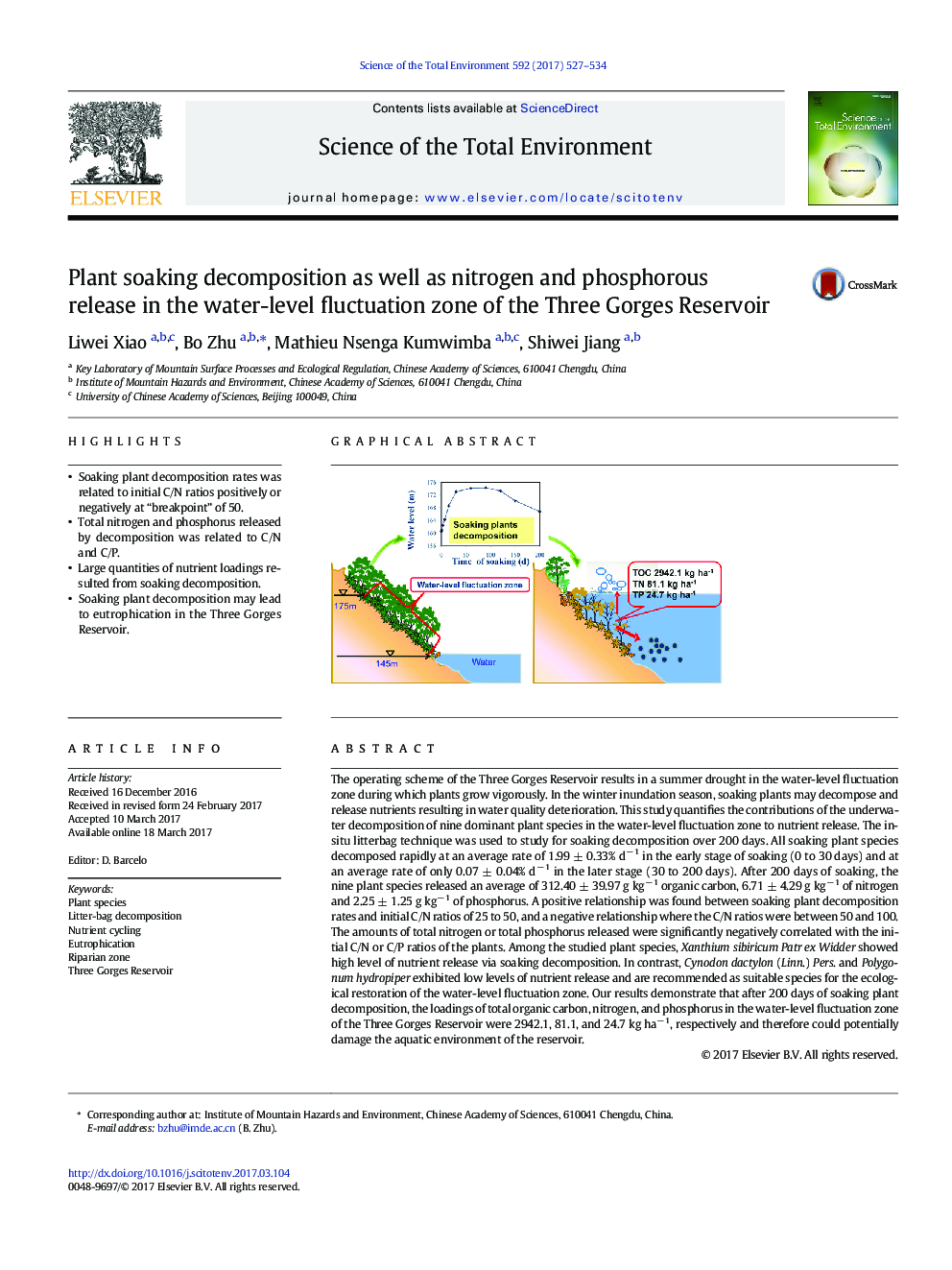| کد مقاله | کد نشریه | سال انتشار | مقاله انگلیسی | نسخه تمام متن |
|---|---|---|---|---|
| 5751671 | 1619703 | 2017 | 8 صفحه PDF | دانلود رایگان |
- Soaking plant decomposition rates was related to initial C/N ratios positively or negatively at “breakpoint” of 50.
- Total nitrogen and phosphorus released by decomposition was related to C/N and C/P.
- Large quantities of nutrient loadings resulted from soaking decomposition.
- Soaking plant decomposition may lead to eutrophication in the Three Gorges Reservoir.
The operating scheme of the Three Gorges Reservoir results in a summer drought in the water-level fluctuation zone during which plants grow vigorously. In the winter inundation season, soaking plants may decompose and release nutrients resulting in water quality deterioration. This study quantifies the contributions of the underwater decomposition of nine dominant plant species in the water-level fluctuation zone to nutrient release. The in-situ litterbag technique was used to study for soaking decomposition over 200 days. All soaking plant species decomposed rapidly at an average rate of 1.99 ± 0.33% dâ 1 in the early stage of soaking (0 to 30 days) and at an average rate of only 0.07 ± 0.04% dâ 1 in the later stage (30 to 200 days). After 200 days of soaking, the nine plant species released an average of 312.40 ± 39.97 g kgâ 1 organic carbon, 6.71 ± 4.29 g kgâ 1 of nitrogen and 2.25 ± 1.25 g kgâ 1 of phosphorus. A positive relationship was found between soaking plant decomposition rates and initial C/N ratios of 25 to 50, and a negative relationship where the C/N ratios were between 50 and 100. The amounts of total nitrogen or total phosphorus released were significantly negatively correlated with the initial C/N or C/P ratios of the plants. Among the studied plant species, Xanthium sibiricum Patr ex Widder showed high level of nutrient release via soaking decomposition. In contrast, Cynodon dactylon (Linn.) Pers. and Polygonum hydropiper exhibited low levels of nutrient release and are recommended as suitable species for the ecological restoration of the water-level fluctuation zone. Our results demonstrate that after 200 days of soaking plant decomposition, the loadings of total organic carbon, nitrogen, and phosphorus in the water-level fluctuation zone of the Three Gorges Reservoir were 2942.1, 81.1, and 24.7 kg haâ 1, respectively and therefore could potentially damage the aquatic environment of the reservoir.
290
Journal: Science of The Total Environment - Volume 592, 15 August 2017, Pages 527-534
